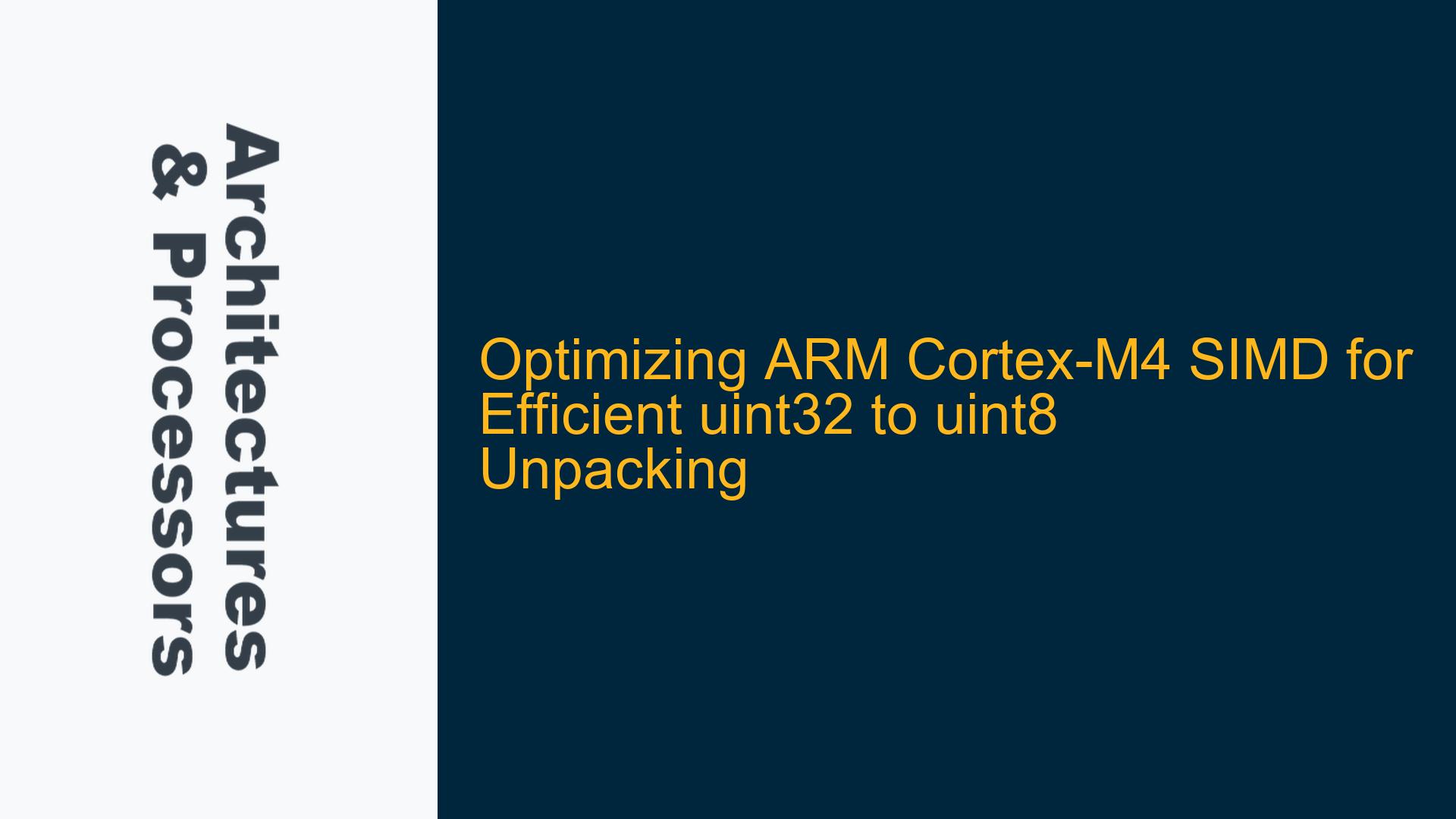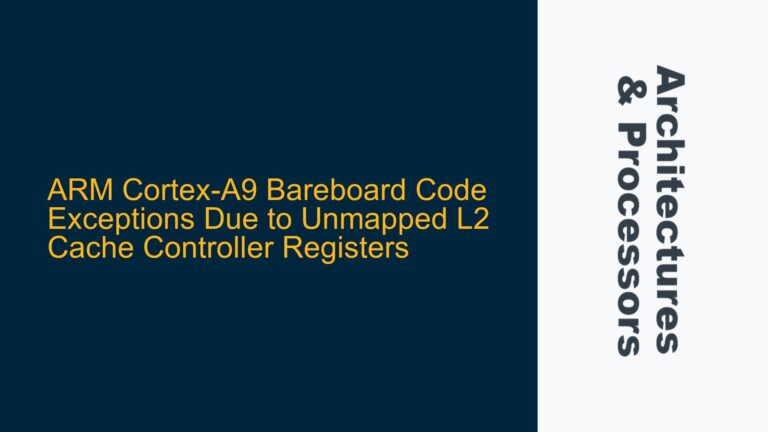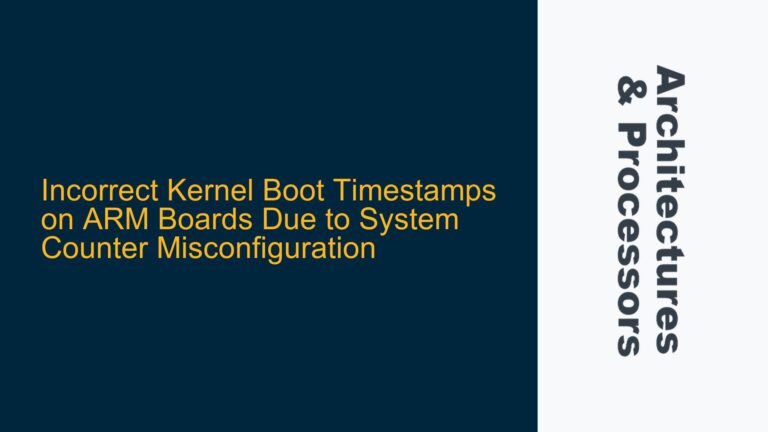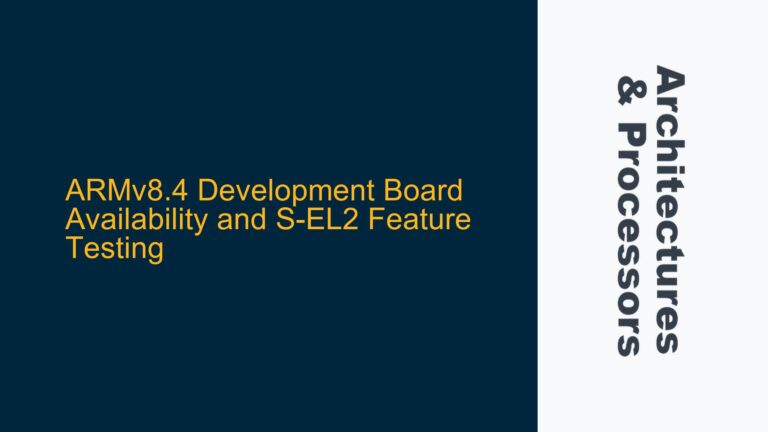ARM Cortex-M4 SIMD Unpacking Challenges and Performance Constraints
The ARM Cortex-M4 processor, known for its DSP and SIMD capabilities, is often employed in embedded systems where performance and efficiency are critical. One common task in such systems is unpacking a 32-bit unsigned integer (uint32) into four 8-bit unsigned integers (uint8). This operation is particularly relevant when dealing with data transmission protocols, such as USB CDC, where data must be sent in byte-sized chunks. The challenge lies in achieving this unpacking operation as efficiently as possible, especially under tight timing constraints.
The Cortex-M4’s SIMD (Single Instruction, Multiple Data) instructions can be leveraged to optimize this process. However, understanding the nuances of these instructions and their interaction with the memory subsystem is crucial. The primary goal is to minimize the number of clock cycles required for the unpacking operation while ensuring data integrity and correct byte ordering.
In this context, the discussion revolves around the use of specific ARM instructions like UXTAB, UXTB, and UXTAB16, which are designed to extract and manipulate byte-sized data from larger registers. Additionally, the role of memory alignment, endianness, and the potential use of casting versus explicit unpacking are explored. The Cortex-M4’s pipeline architecture and its impact on instruction scheduling also play a significant role in determining the optimal approach.
Memory Alignment, Endianness, and Instruction Selection
The Cortex-M4’s memory subsystem and its handling of data alignment and endianness are critical factors in the unpacking process. The processor supports both little-endian and big-endian data formats, but most Cortex-M4 implementations default to little-endian. This means that the least significant byte (LSB) of a 32-bit word is stored at the lowest memory address. Understanding this is essential when unpacking a uint32 into four uint8 values, as the byte order in memory must match the expected output format.
The UXTAB (Unsigned Extend and Add Byte) and UXTB (Unsigned Extend Byte) instructions are particularly useful for this task. UXTAB extracts a byte from a 32-bit register, optionally rotates it, and then zero-extends it to 32 bits. UXTB performs a similar operation but without the addition step. These instructions can be used to extract each byte from a uint32 value and store it in a separate register. For example, given a uint32 value 0x12345678, the following sequence of UXTB instructions can be used to extract each byte:
UXTB r2, r1, #0 // Extract byte 0 (0x12)
UXTB r3, r1, #8 // Extract byte 1 (0x34)
UXTB r4, r1, #16 // Extract byte 2 (0x56)
UXTB r5, r1, #24 // Extract byte 3 (0x78)
In this example, r1 contains the original uint32 value, and r2, r3, r4, and r5 will contain the extracted uint8 values. The rotation parameter (#0, #8, #16, #24) specifies the number of bits to rotate the original value right before extracting the byte. This approach ensures that the correct byte is extracted and zero-extended to 32 bits.
However, if the data is already in the correct byte order in memory, a simple cast from uint32 to uint8 may suffice. For example, if the uint32 array is stored in little-endian format and the output requires the same order, casting the pointer to uint8 and passing it directly to the DMA transfer function can be the most efficient solution. This avoids the need for explicit unpacking and reduces the number of instructions executed.
Implementing Efficient Unpacking with SIMD and Memory Operations
When explicit unpacking is necessary, the Cortex-M4’s SIMD capabilities can be leveraged to optimize the process. The UXTAB16 instruction, which operates on two 16-bit halfwords within a 32-bit register, can be used to extract two bytes at a time. This reduces the number of instructions required to unpack a uint32 into four uint8 values. For example:
UXTAB16 r3, r1, r0, #0 // Extract bytes 0 and 1 (0x12 and 0x34)
UXTAB16 r5, r1, r0, #8 // Extract bytes 2 and 3 (0x56 and 0x78)
In this example, r1 contains the original uint32 value, and r3 and r5 will contain the extracted uint8 pairs. The rotation parameter (#0, #8) specifies the number of bits to rotate the original value right before extracting the halfwords. This approach reduces the number of instructions required but may require additional steps to separate the bytes if they need to be stored individually.
Another approach is to use the REV (Reverse) instruction, which reverses the byte order of a 32-bit word. This can be useful if the data needs to be reordered before unpacking. For example:
LDR r1, [r2], #4 // Load uint32 value from memory
REV r1, r1 // Reverse byte order
STR r1, [r0], #4 // Store reversed value to memory
In this example, the REV instruction is used to reverse the byte order of the uint32 value before storing it back to memory. This can be useful if the output requires a different byte order than the input.
Finally, if the data is already in the correct order in memory, a simple cast from uint32 to uint8 may be the most efficient solution. For example:
uint32_t foo[] = { 0x12345678 };
bar->writeEP((uint8_t *) foo);
In this example, the uint32 array is cast to a uint8 pointer and passed directly to the DMA transfer function. This avoids the need for explicit unpacking and reduces the number of instructions executed.
Conclusion
Optimizing the unpacking of a uint32 into four uint8 values on the ARM Cortex-M4 requires a deep understanding of the processor’s SIMD capabilities, memory subsystem, and instruction set. By carefully selecting the appropriate instructions and considering the data’s alignment and endianness, it is possible to achieve significant performance improvements. Whether using explicit unpacking with UXTB and UXTAB16, reordering data with REV, or simply casting pointers, the key is to minimize the number of instructions executed while ensuring data integrity and correct byte ordering.






